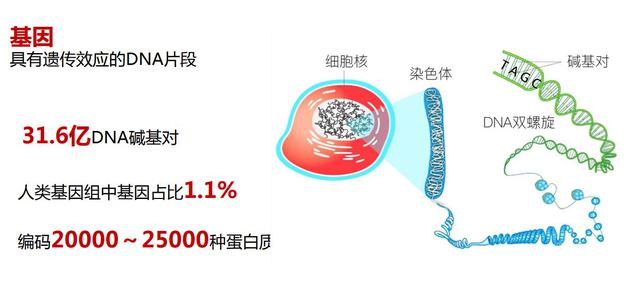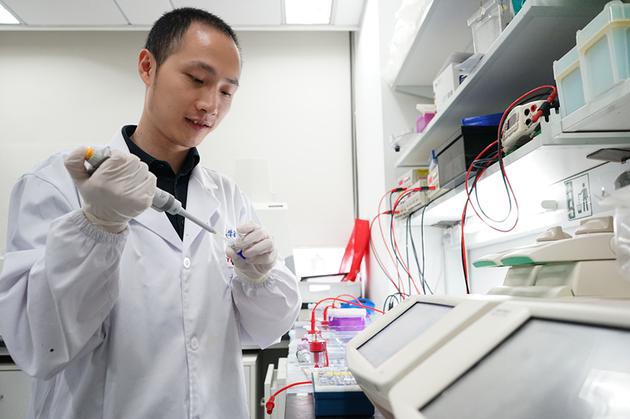It is safer to cut the genetic editing technology of "Life Bible". In this fiercely competitive global field, Chinese scientists have begun to lead the world.
At 11 o'clock in Beijing time, the British "Nature" magazine published a paper by Yang Hui, a researcher at the Center for Excellence in Brain Science and Intelligent Technology of the Chinese Academy of Sciences. They not only found that the existing gene editing technology would modify the DNA and a lot of "injury" of ribose. Nucleic acid (RNA) has also invented a new generation of gene editing technology that will not cause accidental injury, which makes genetic editing more safe and efficient, and provides important security for its clinical entry.
“At present, we have applied for patents for it and promoted the transformation to clinical and industrial.†Yang Hui told reporters that there is already venture capital intervention, and hopes to establish relevant technology platforms and production bases in the Yangtze River Delta as soon as possible to accelerate basic research to clinical and industrial. Conversion.
Eliminate "off-target" and let the gene "scissors" safely enter the clinic
Worldwide, more than 7,000 rare diseases plague humans, 80% of which are monogenic genetic diseases such as thalassemia, hemophilia, macular degeneration, and hereditary deafness. In theory, genetic editing techniques can easily “correct†these natural errors and regain health for hundreds of millions of patients. So far, because the safety can not be determined, only two or three gene editing technologies have reached the stage of clinical trials.
To cure a genetic disease, it is often necessary to genetically edit trillions of adult cells. If the editing is not precise enough, cell errors will lead to cancer and other risks.
"Most of the gene editing technology uses the virus as a carrier to transport a 'small scissors' into the cells." Yang Hui explained that despite the navigation molecules, more "small scissors" are in a state of misunderstanding - This is why genetic editing is prone to “off-targetâ€.

Human DNA has more than 3 billion bases, of which 1.1% are gene fragments, and the rest contain information about non-coding RNAs and other molecules involved in life activities. On February 28 this year, Yang Hui's research group published a paper in the US "Science" magazine, announcing the discovery of a method to accurately trace all the modifications of DNA "scissors" to DNA, and establish a detection system GOTI. They found that the thought of a safe single-base gene editing technology could cause 20 times the normal state of the gene mutation! The discovery promptly halted a genetic editing treatment project that is about to enter the clinic.
After more than three months, Yang Hui's research group re-issued the article on Nature, pointing out that the gene "small scissors" had a lot of "injury" of RNA due to off-target. "Encoding RNA can directly produce proteins, and it is also the 'secondary hand' that turns DNA into protein. Many of their changes may directly affect life activities." Yang Hui said that they found through experiments that in some cells, single-base editing Causes changes to tens of thousands of encoded RNAs.
where is the problem? After in-depth research, the research team found that the protein carrying the "small scissors" had some structures that would "handle" with RNA - so that "small scissors" would be "misleading" by the protein to modify the RNA. As a result, they tried to “silence†these structures, thus inventing three new generations of genetic editing tools that are safer and more precise, which will provide important security for gene editing in clinical treatment.
Basic research is in line with the industry, original scientific research accelerates new kinetic energy
The safety of gene editing is a hot field of competition. When the safety bottleneck of gene editing is broken, the market for gene therapy of billions of dollars is expected to develop rapidly.
In the middle and late April, Nature recently published another paper on the discovery of RNA off-target. Yang Hui’s paper has not been published yet, and he has applied for two related patents.
In fact, his last paper was just published in the journal Science, and companies and venture capital came to discuss cooperation. Applying for patents, negotiating with VCs and companies... Yang Hui has encountered more and more in the past two or three years.

â–²Yang Hui conducts genetic editing related experiments in the laboratory
“In recent years, with the implementation of a series of scientific and technological achievements transformation policies of the State, the Chinese Academy of Sciences and Shanghai, the Center for Excellence in Brain Science and Intelligent Technology has actively encouraged researchers to transform their results. Neuroscientists who used to bury their heads in labs We have also begun to pay attention to the transformation of results." In order to promote industrialization, the Center for Excellence in Innovation has newly established a major task and transformation of results. Wang Qianfu, deputy director of the department, said that from the establishment of research topics, the research team leaders have consciously Choose a topic with great potential application value.
A set of data can explain the problem: Before 2017, the company's annual patent application has been a single digit; in 2018, the Center of Excellence applied for 19 patents; less than half a year later, the number of patent applications is close. 20 items.
Academician of the Chinese Academy of Sciences and Director of the Center for Excellence in Brain Science and Intelligent Technology Innovation of the Chinese Academy of Sciences, Pu Muming believes that China's major original innovation must serve the national economy and the people's livelihood. In January 2018, the world's first somatic cell cloned monkey was published in the journal Cell, and the brain-based science base based on cloned monkey technology landed in the Songjiang G60 Kechuang Corridor in July of the same year. Wang Qianfu revealed that the Center of Excellence will promote the transformation of more cutting-edge projects in the brainstorming base.
Right now, Yang Hui's research team has begun to experiment with mice and monkeys to study rare diseases with genetic editing. "In order to realize the industrialization of gene editing and treatment, it is necessary to establish a series of technical platforms and professional workshops such as humanized animal model platform, gene editing and treatment strategy research and development platform, clinical trial and effect evaluation platform." Yang Hui said that the current domestic The foundation is rather weak, and the first-mover advantage of basic research should be utilized to consolidate the foundation of industrialization as soon as possible. In his view, genetic editing technology can find a cure for rare patients faster than the long and difficult new drug development process.
Source: Wen Wei Po
Disposable accessories,High Quality Disposable accessories,Disposable accessories Details, CN
ShaoXing SurgeCare Medical Products Co., Ltd. , https://www.sxsurgecaremedical.com